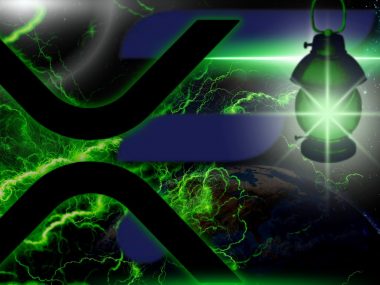I first began looking at the XRPL ecosystem and Ripple in 2019. I began heavily accumulating
XRP in 2020 and it represented the largest position in my portfolio. I researched Ripple’s use
case of the XRPL as part of a new settlement infrastructure for enterprise and global adoption. I
could see how the transaction properties of XRP, namely extremely fast transaction time and
low fees means that XRP would be perfect for a bridge currency. The foreign exchange market
and cross border payments was first to be disrupted by Ripple’s On-Demand Liquidity Product. I
am still very much excited about the overall XRPL ecosystem with further developments on
Federated side chains, smart contract capabilities via hooks, the XLS-20 NFT standard and
more.
Then in mid 2020, the XRP community began hearing about an upcoming project called Flare
Networks, a new layer 1 smart-contracts blockchain designed with a built in decentralised oracle
and that could facilitate non-smart contract blockchain assets to be brought onto Flare and
unlock value in these assets through new smart-contract functionalities. After learning about the
process to claim $FLR (Spark, or Flare tokens) with my XRP holdings, I decided to dig deeper
into the Flare project. I quickly stumbled across Mickey B Fresh who was explaining the token
design around $FLR and how its utility plays into the Flare Times Series Oracle and the
F-Assets system. I went through all the whitepapers and began diving deep into researching
everything about this up and coming ecosystem and became hooked when I realised, through
Mickey B Fresh’s educational content, that the yield opportunities from the network’s design
around the native $FLR token was massive.
Fast forward to 2021/2022 after holding on to XRP for what seems like forever, I realise that
XRP and many other cryptoasset investments have limited utility in terms of actively
participating in the network and earning yield. One could earn yield on such cryptoassets by
deploying them into CeFi but frankly the APY was quite low and this would involve trusting a
centralised platform. My entire crypto investment mindset has evolved from buy and hold, to
staking on networks, to DeFi yield farming and now Flare – which I see as the ultimate DeFi
platform with inbuilt compounding yields that are designed on the network level to incentivise
active participation in solving current issues in the crypto industry (more on this later).
And here we are now, with the launch imminent, Flare’s strong engineering team has built four
novel core protocols – which I will go over briefly in this blog.
First, Flare has built a native decentralised oracle system (FTSO) where independent data providers compete to provide the most accurate cryptoasset prices to the FTSO and get rewarded by the system in $FLR for doing so. Each $FLR has a detachable vote where we as $FLR holders are able to delegate to the data providers and earn $FLR rewards. This is all done without giving up custody of your $FLR, so is a zero-risk yield opportunity. The FTSO inherently removes the risk of DeFi hacks related to faulty external oracles that exist in other DeFi ecosystems.
Second, the F-asset system will utilise these decentralised prices to allow the trustless minting
of a 1:1 representation of non-turing complete cryptos (such as XRP, ALGO, BTC etc). The
F-asset system will require collateral in the form of $FLR to complete this minting process of
F-assets (E.g. FXRP, FALGO, FBTC), and this collateral can be self funded or “borrowed” from
lending agents in the network in exchange for a minting fee. Why would anyone want to mint
F-assets? Well for one, F-asset holders earn daily yield in $FLR from the network’s rewards
pools. Second, while F-assets are earning you $FLR, you could simultaneously deploy these
assets into DeFi ecosystems to earn further yield (e.g. in a DEX liquidity pool or a lending
platform on Flare) as these assets now have smart contract capabilities. The rewarded $FLR
can be deployed in FTSO “AND” the F-asset collateral system to earn underlying assets as fees
(e.g. XRP, ALGO, BTC as fees). This brings unseen utility to such cryptoassets that do not
support smart contracts. The more demand for minting F-assets, the more $FLR collateral is
required in the system, and this will ultimately drive up the value of $FLR.
Third, the team has also developed the State Connector system, which is a smart contract
system running on Flare blockchain that rewards independent attestation providers who come to consensus on the state of any other blockchain or open API. This system is core to the
functioning of F-assets and Flare’s LayerCake bridging protocol. I won’t go into details here in
this blog but essentially I see the State Connector complimenting other Flare core protocols in
ushering in waves of liquidity and new markets to Flare.
Finally, the team recently announced in March 2022 the LayerCake protocol. LayerCake is a
novel L1 bridging protocol that uses the State Connector system and $FLR to securely move
assets from L1 smart contract platforms to and from each other. As F-assets have smart
contract capabilities on Flare, they can also be bridged to other L1 blockchains. The LayerCake
bridging is fast, decentralised and is fully insured for the value that moves across the bridge at
any point in time. LayerCake’s design seeks to prevent and mitigate the bridging hacks that
have occurred in the cross-chain DeFi ecosystem. In LayerCake, $FLR is held as collateral by
those participants operating the bridge – and that’s additional demand for $FLR.
Now that was probably a lot to digest and understand.
I really didn’t want this blog to be too technical but that’s the thing with Flare Networks – it has a unique system architecture and cleverly thought out tokenomics around $FLR and
understanding such a network is a steep learning curve.
The Flare Networks is a decentralised, community governed network (DAO) that aims to solve real problems in the crypto industry as outlined above. Those that participate in and contribute to the network, especially early, will reap the most rewards in the form of yield and exposure to Dapps coming onto Flare.
Moving forward, with the help of some very intelligent folks in the Mickey B Fresh group, I plan
to remain at the leading edge of research within the Flare and Songbird ecosystem. The
Songbird canary network has been live and running smoothly for over 9 months, and we’re all
so excited to be hitting the ground running when Flare launches






